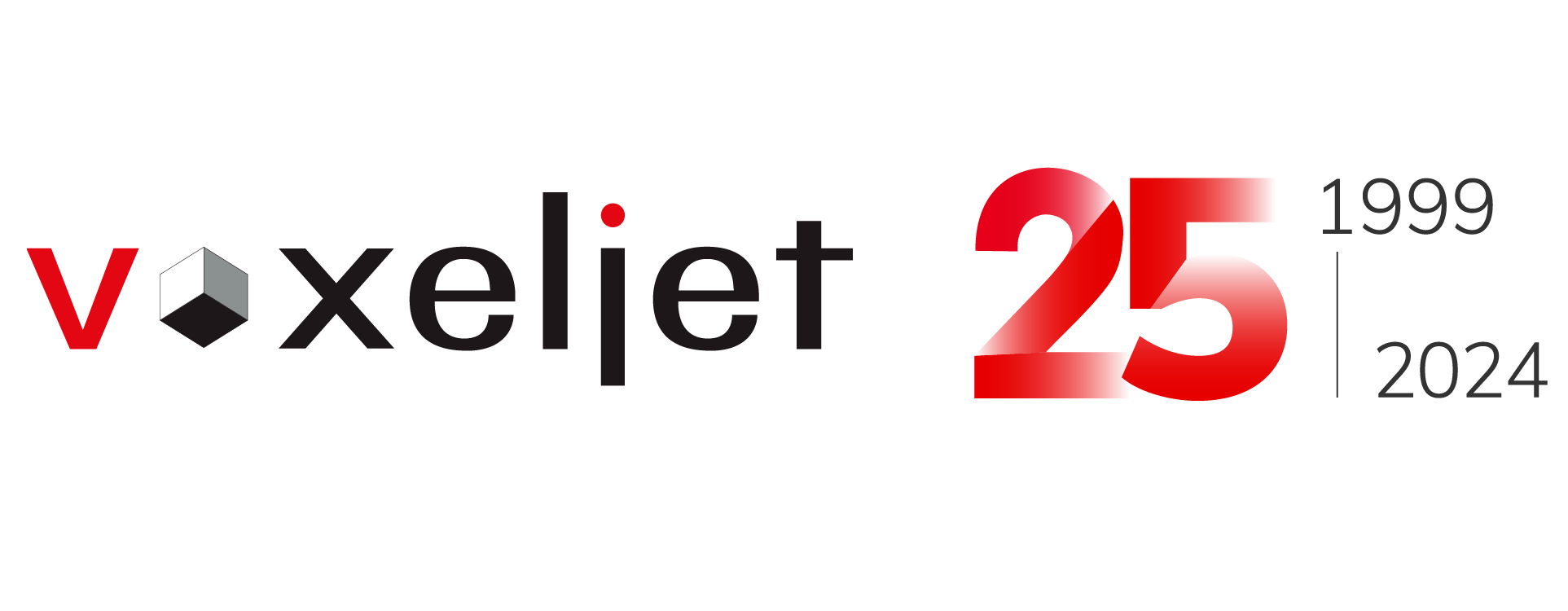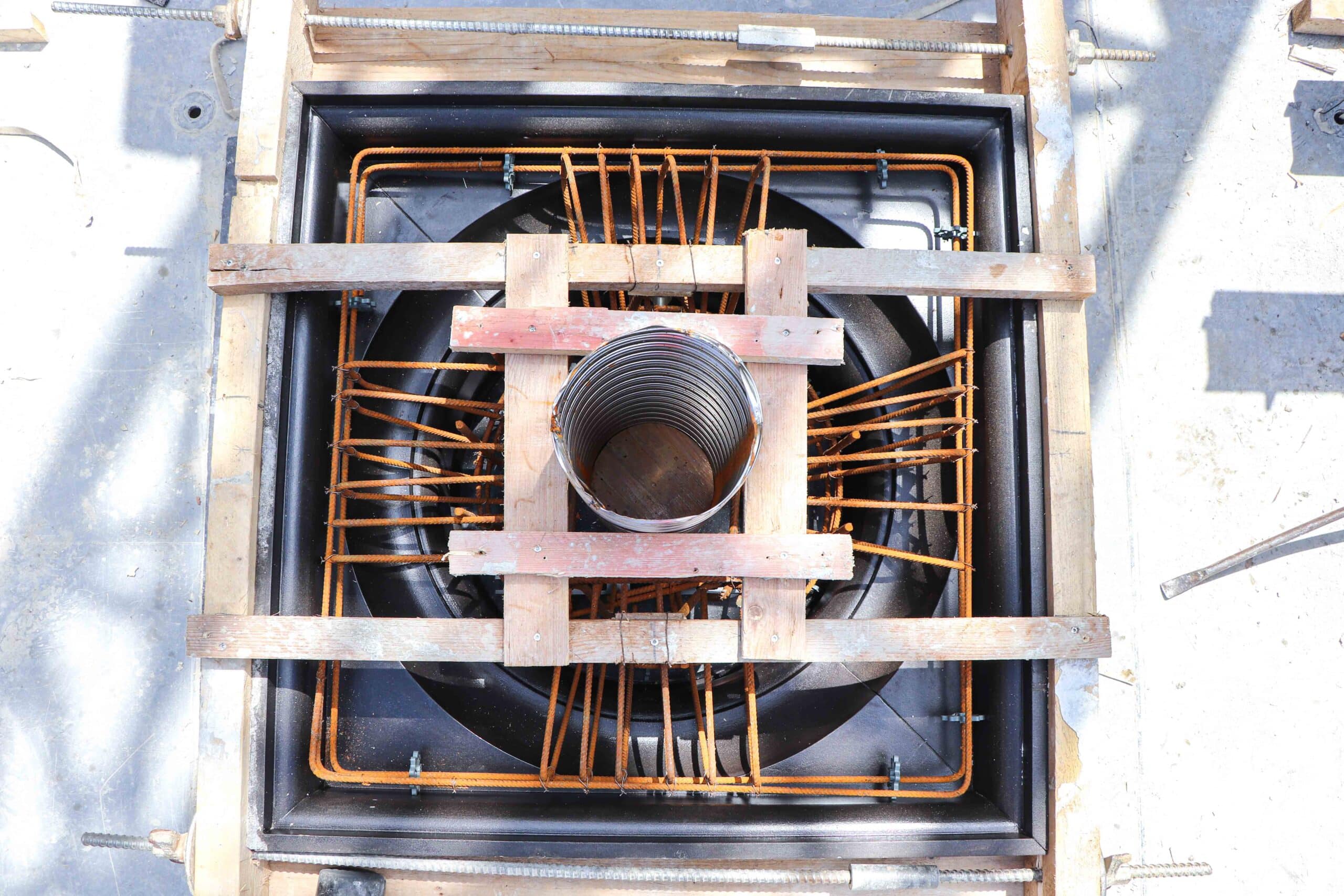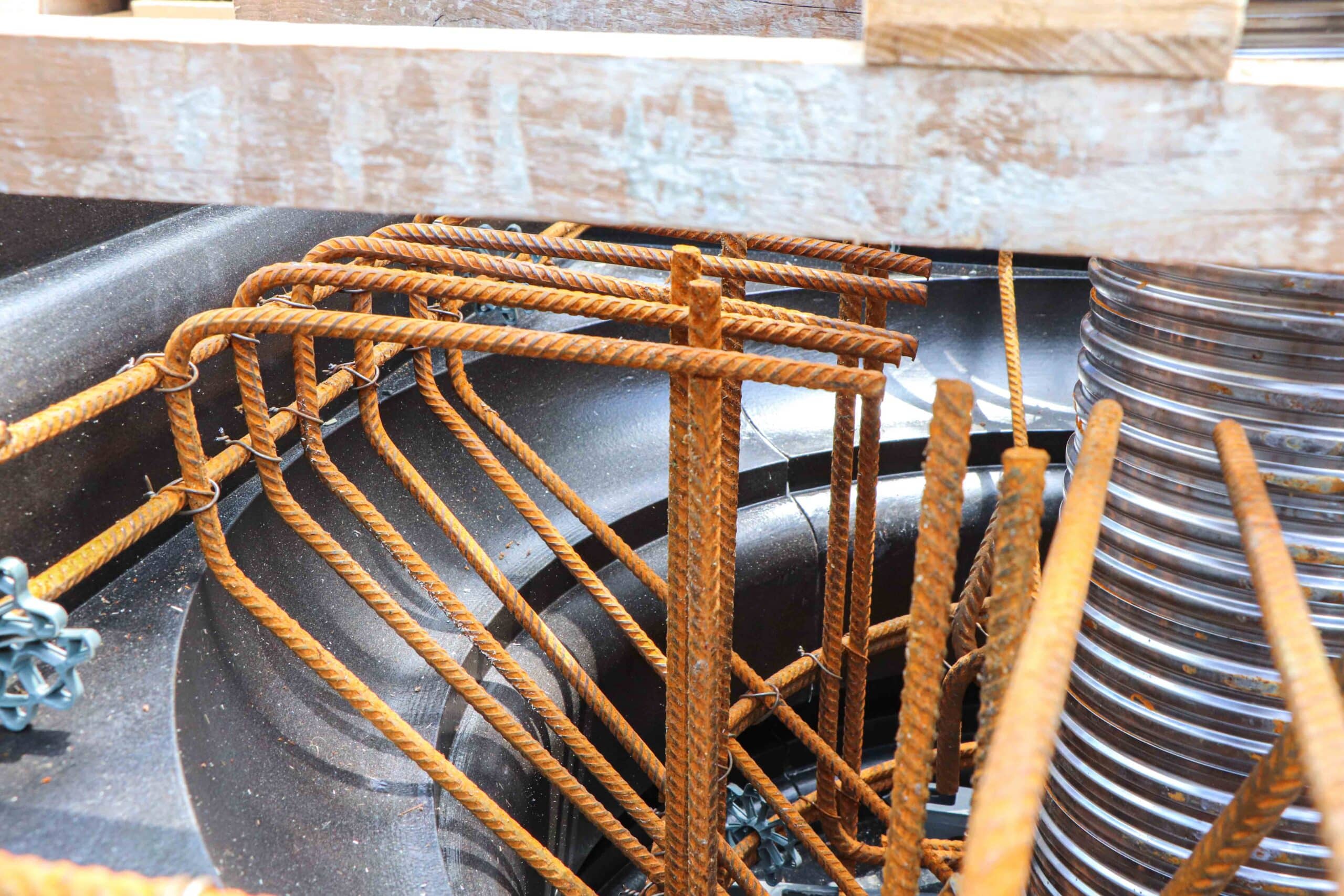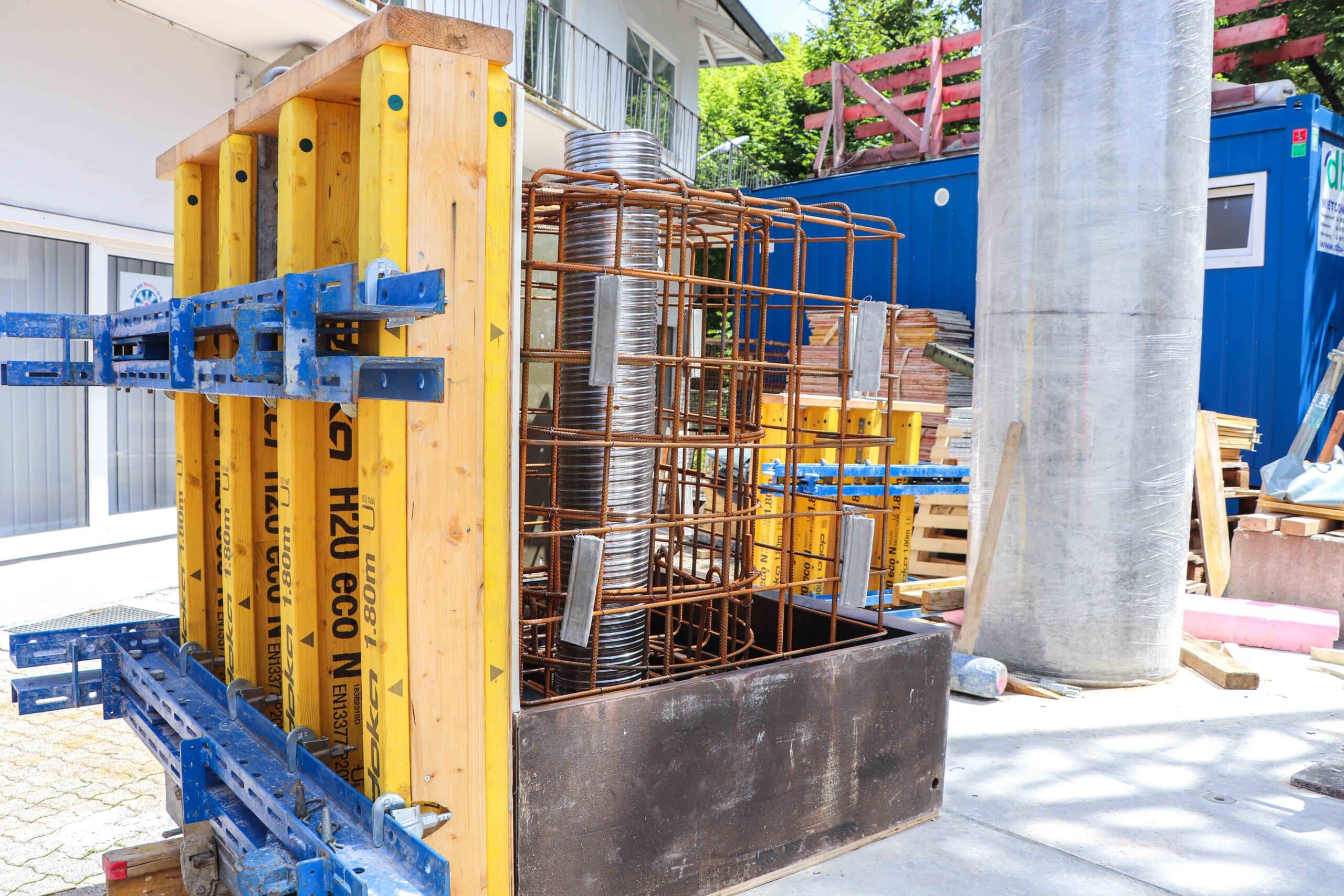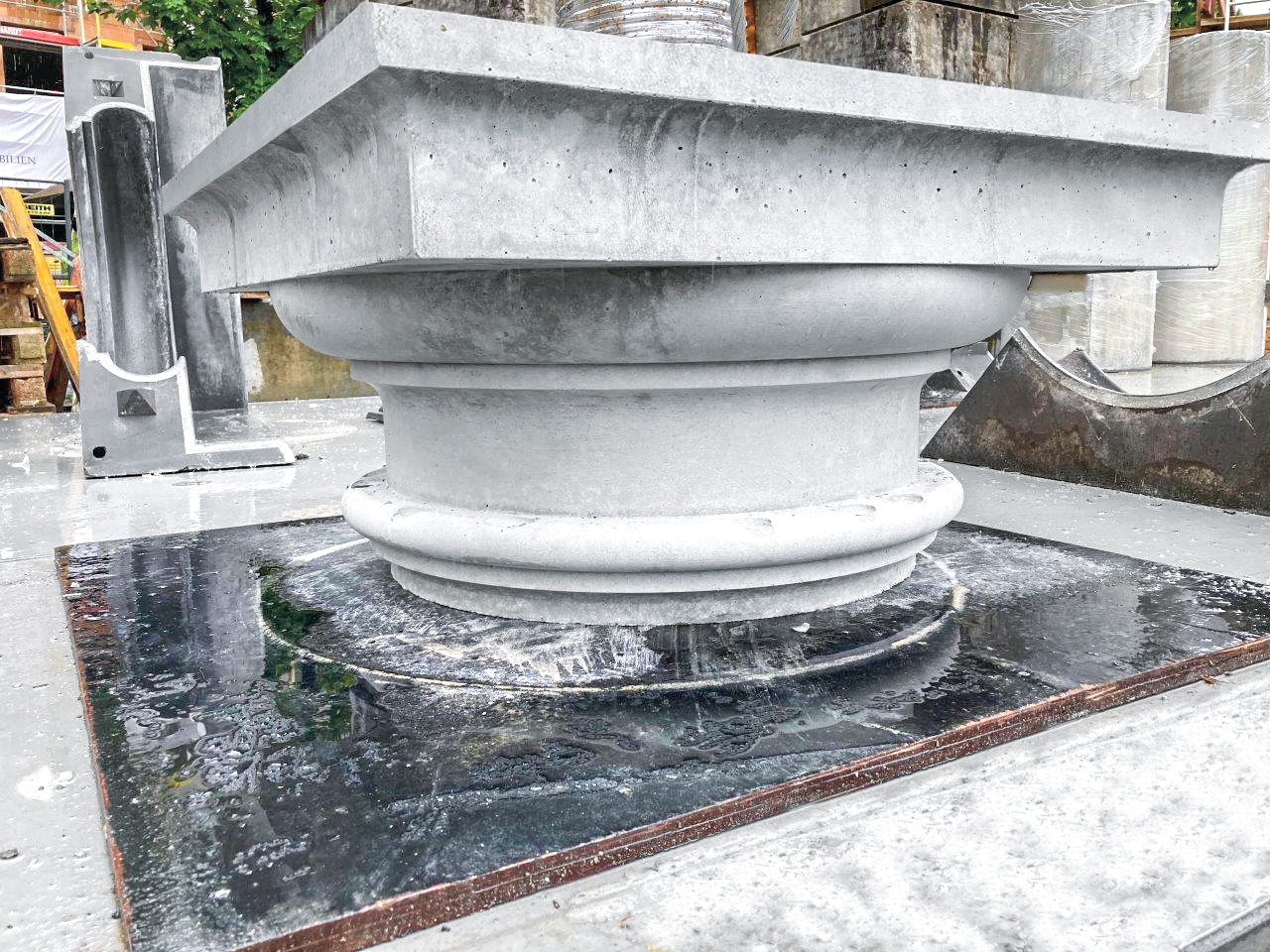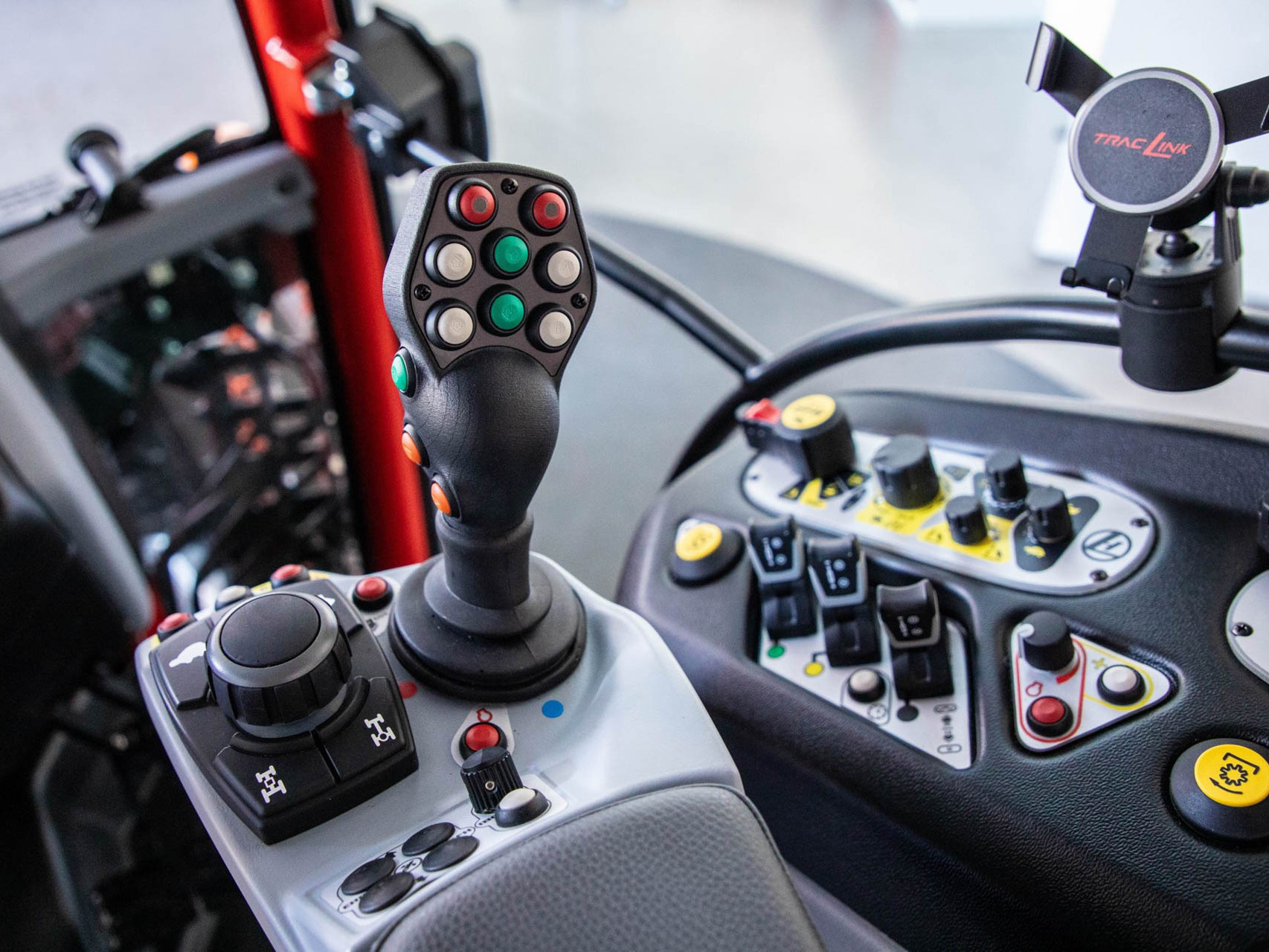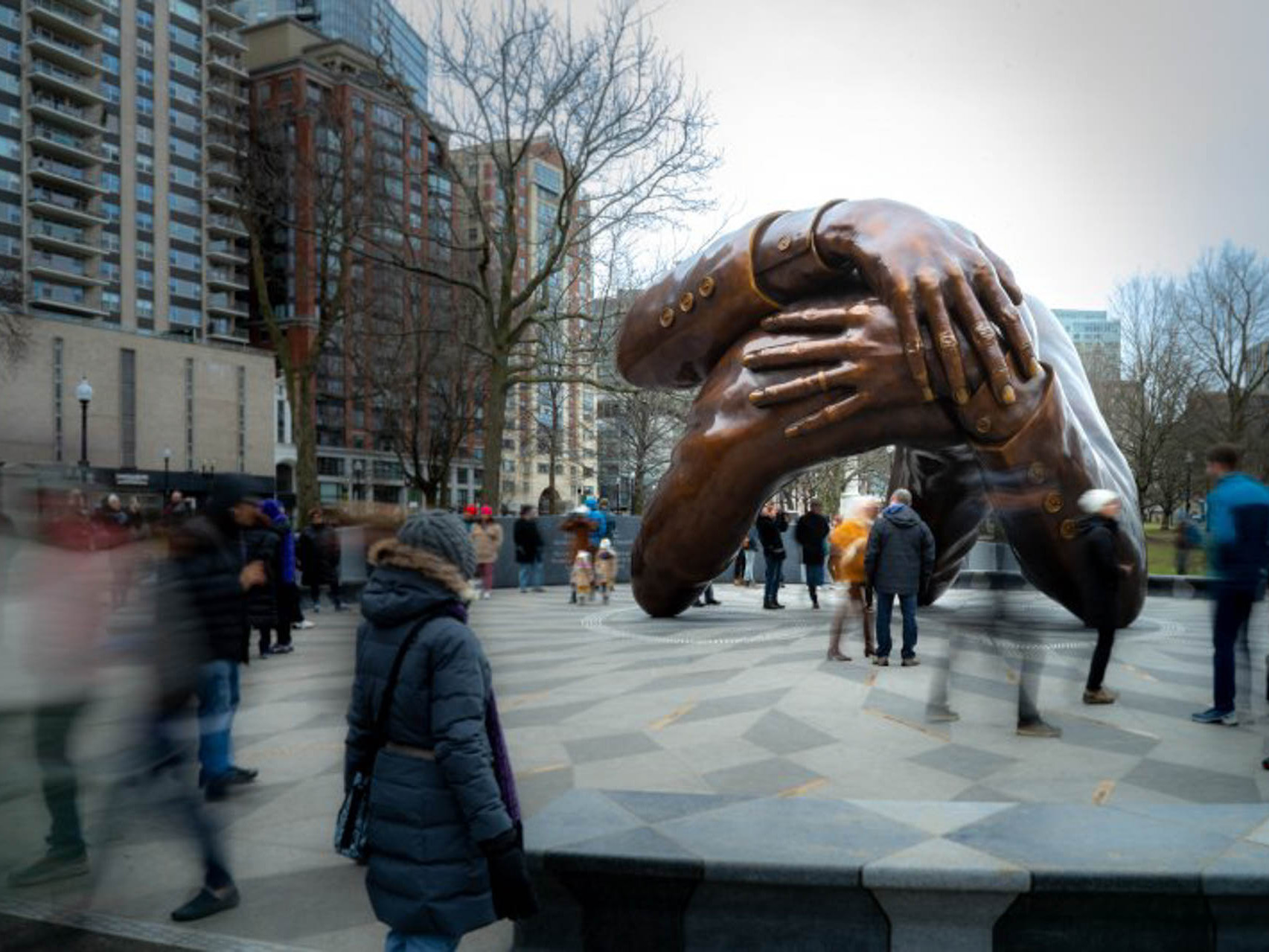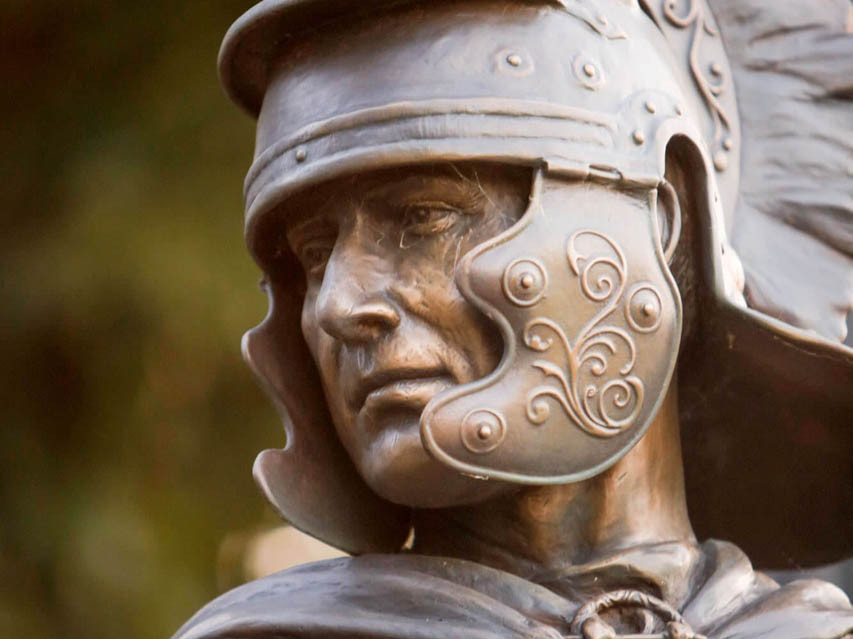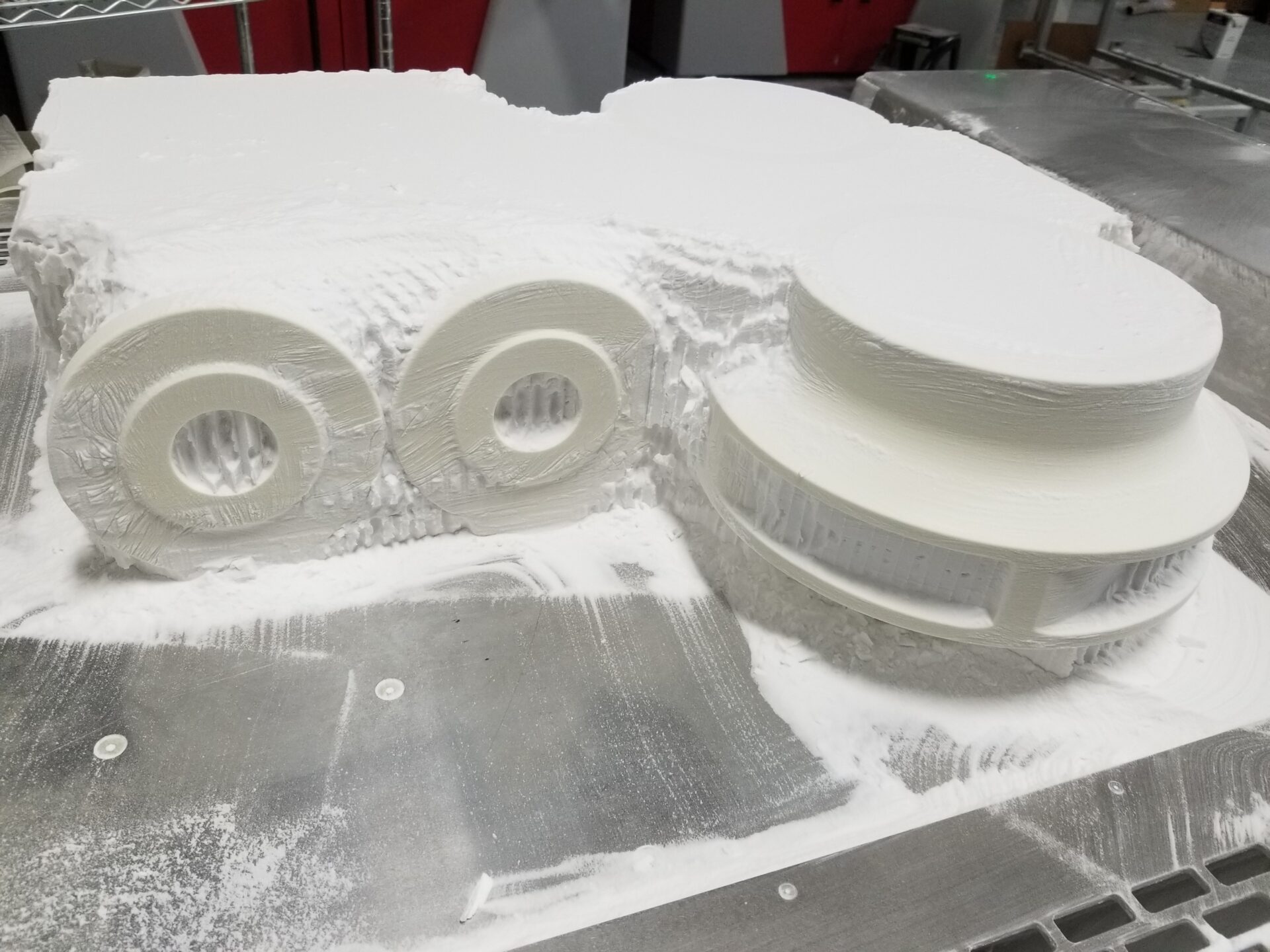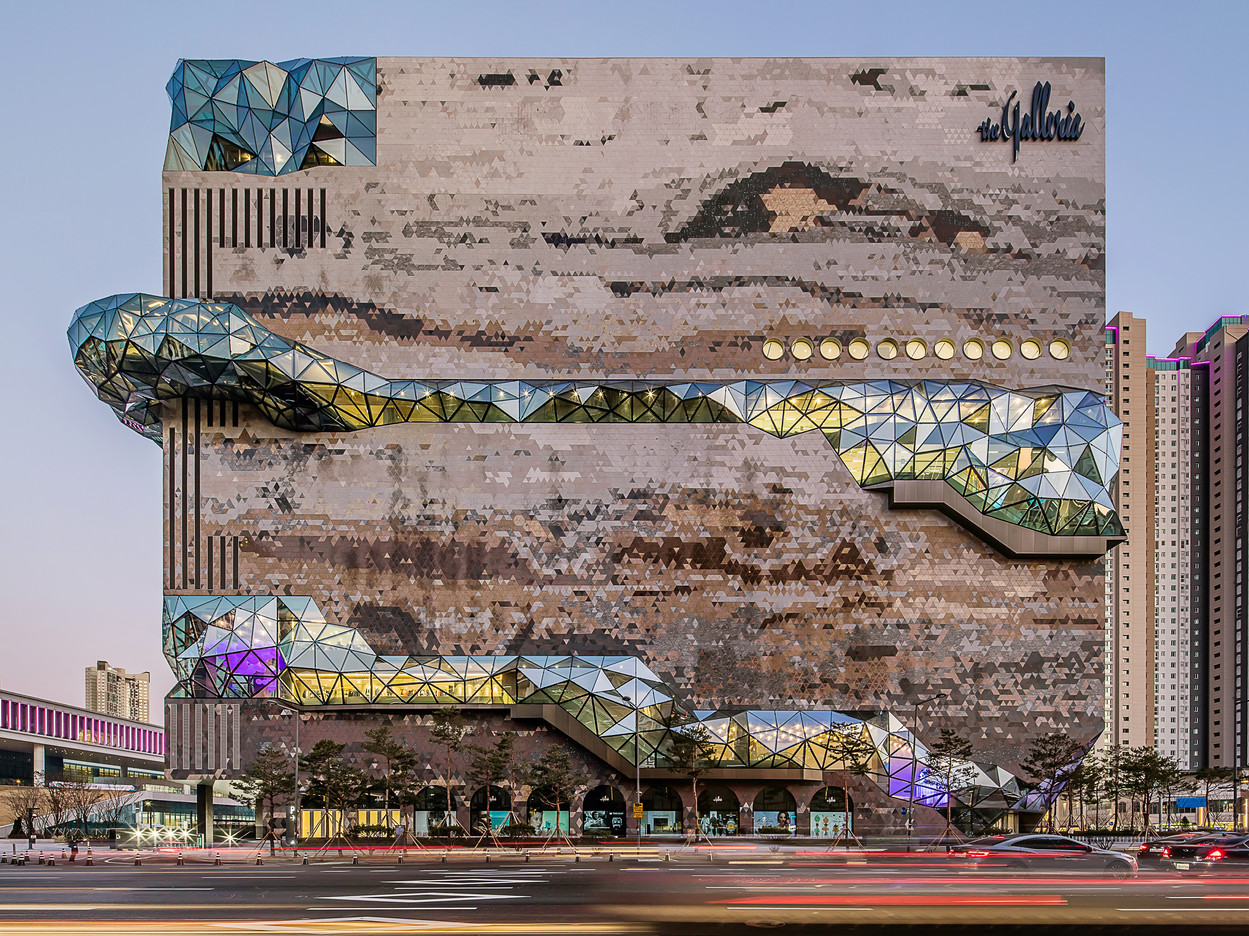- Home
- Case Studies
- Architecture
- Pillar project Doka
Complex formwork for concrete casting - 3D printing comes into action
Together with formwork expert Doka, the efficiency and effectiveness of 3D-printed formwork for concrete casting was once again proven. This time near Munich, during the casting of two portal columns for an office building.
Whether as a load-bearing support or simply as a decorative element, columns in particular have accompanied the architectural world for several millennia. In some cases, from the oldest, more or less still existing buildings in this world, only the columns remain. Even today, the enthusiasm for these elements continues, although rather rarely.
For an office and commercial building in the Munich suburb of Grünwald, for example, the task was to produce two portal columns for the entrance to the building. These were to be cast from concrete and thus directly catch the eye of visitors with fair-faced concrete quality.
Despite the long history of these structural elements, the construction of the columns posed one or two challenges. In particular, the postaments (pedestals) and the capitals (virtually the head of the column) presented a formwork challenge due to their multiple curvatures.
However, the solution to overcome this was already on the minds of the experts at Deutsche Doka Schalungstechnik GmbH, which was commissioned to produce the columns: 3D printing. In the past, the formwork company has already used the innovative Binder Jetting technology to successfully implement complex fair-faced concrete projects. For example, in the construction of a semi-spiral fair-faced concrete staircase for a bank in Leipzig.
Curvatures or undercuts mean that formwork technicians are constantly coming up with new and creative ideas to meet even the most challenging requirements of architects and clients. In the example of the 9.90 m high columns in the Doric style in Grünwald, these challenges lay in particular in the curves and shapes of the postaments and capitals which conclude each of the columns.
New meets tried and tested: hybrid shuttering units as a solution
In order to find the most cost-effective solution, the project team, led by Helmut Hilliges – Project Engineer Application Technology – made use of voxeljet’s Binder Jetting 3D printing technology . Instead of milling the formwork bodies from wood, as is often the case in special formwork construction, the elements were 3D printed in sand. They were then cured and prepared for concrete casting. For this purpose, the components were infiltrated with epoxy resin to increase the strength of the elements. Finally, the surface was ground, sealed and finished to achieve the best possible exposed concrete results and to ensure reusability of the formwork structure.
The 3D-printed formwork can be used just like conventional formwork. And even better: they can be combined with each other. In the case of the Grünwalder columns, this approach was chosen for the postament. The column element was formed with Doka column formwork Top 50, and the 3D-printed formwork for the pedestal was connected to it. The result was convincing with an almost perfect construction joint between the two parts. The capitals were cast individually, purely with 3D-printed elements.
Time savings thanks to function integration
Especially for the combination with other formwork elements, another advantage of 3D printing comes into play. Because the 3D printing process is based on CAD data and complexity is irrelevant, functions can be integrated directly into components and elements during the planning stage and printed at the same time. In this way, the handling of the parts on the construction site can be significantly optimized.
The great advantage here is being able to integrate a wide range of functions into the printed component at the same time. You don't have to drill clamping holes afterwards, but can print them right away. The same applies to lifting handles, for tongue and groove joints, so that you can set an even surface when clamping the elements.
Helmut Hilliges, Verantwortlicher ProjektingenieurDeutsche Doka Schalungstechnik GmbH
Thanks to direct function integration, assembly time has already been reduced by a factor of ten in previous projects. Especially for complex projects with multiple curvatures, milling machines reach their limits. Additive manufacturing works independently of geometric barriers and questions of manufacturability. Anything that is constructively feasible can be printed. New iterations or variants can be conveniently adapted digitally and printed out again. This results in an attractive price advantage, especially for small quantities.
With appropriate post-processing, such as for the columns, the formwork elements can also be reused to further increase cost-effectiveness.
In general, additive manufacturing with all its characteristic features is gaining more and more attention in architecture. Above all, direct concrete 3D printing. In the future, this technology, too, will certainly make for exciting headlines. But the hybrid approach, as chosen by Doka, already offers formwork technicians, architects, and civil engineers an innovative tool to implement complex projects cost-effectively, without a large investment and with seamless integration into existing construction processes.
More Case Studies
3d printed joysticks for tractors and machines
For Lindner Traktorenwerke, 3D printing is already an alternative to injection molding. For example, for customized joysticks and control elements for their tractors.
3D printing patterns for large-scale sculpting
The Embrace is a public artwork in Boston to honor and remember the life of Martin Luther King and his wife Coretta Scott King. The sculpture was created with 3D PMMA printing and investment casting
58 sculptures cast in bronze visualize the Way of the Cross of Jesus in Nebraska, USA. The unique works of art were created by famous artists using a combination of 3D printing, investment casting and bronze casting.
URWAHN – 3D printing in bike manufacturing
To produce its e-bikes, URWAHN has focused on reshoring and lean management and is achieving these goals through additive manufacturing. Learn what role the voxeljet technology plays.
PMMA 3D printing conquers North America
Express Prototyping belongs to the leading experts for 3D printing investement casting patterns in North America. Learn from the CEO Thomas Müller how he established the business and how he sees the future.
3D printing for structural elements in architecture
For the unique facade of the Galleria Gwanggyo in South Korea, 3D printing and investment casting was employed to create hundreds of individual joint knots for the glass walk.
Modern structural optimization combined with 3D printing and the investment casting of titanium. These pedal cranks show what is possible when existing design limits are removed.
Industrial 3D Printing Systems
Our portfolio of industrial 3D printers ranges from compact systems for research to additive series production.
